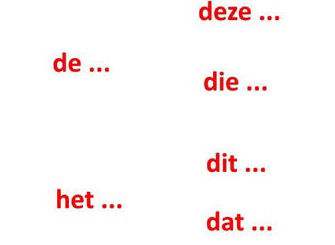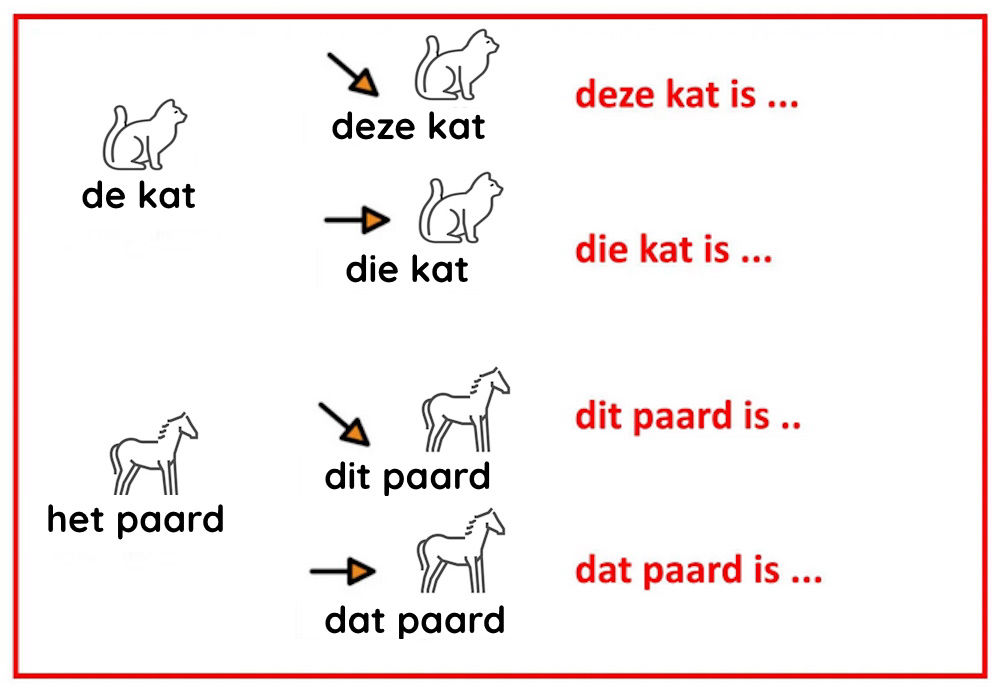
"De"-words and "Het"-words

The distinction between the words "het" and "de" in Dutch, as opposed to the single "the" in English, is an important point of Dutch grammar. Here's a more detailed look at how these words are used in Dutch:
"De" and "Het": Take for instance:
The cow and a cow
The pig and a pig
The word "the" indicates we are dealing with a certain cow or pig, otherwise, we use the word "a". However, in Dutch, we have two possibilities for "the" as you can see in the picture above: "de" or "het". The word "a" (a cow, a pig) is in Dutch always "een".
Hardly any rules:
If we are dealing with a single subject, it can be a "het"-word or a "de"-word. This makes Dutch a more difficult language compared to, for instance, English. If we are dealing with a plural, we are always dealing with "de". Here are a few videos with examples of "de"- and "het"-words.
<<<


Image Description
Use Mobirise website building software to create multiple sites for commercial and non-profit projects. Click on the image in this block to replace it. You can add a description below your image, or on the side. If you want to hide some of the text fields, open the Block parameters, and uncheck relevant options.

This illustration shows the different forms again. Notice how the words that indicate "which cat o which horse?" depend on the fact if we are dealing with an "de"-word like with cat, or a "het-woord" like with horse.
Site was created with Mobirise